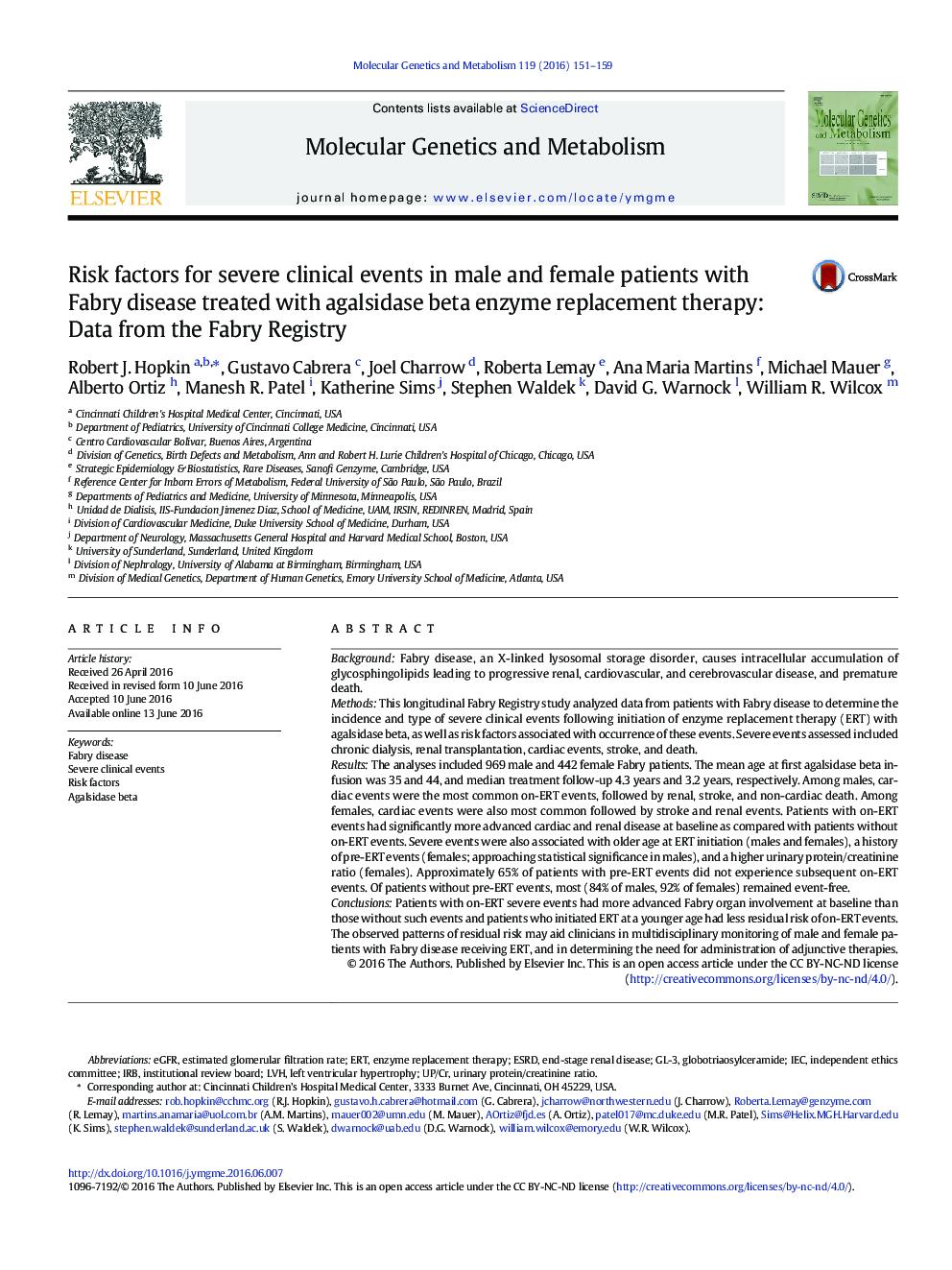| کد مقاله | کد نشریه | سال انتشار | مقاله انگلیسی | نسخه تمام متن |
|---|---|---|---|---|
| 5514000 | 1541557 | 2016 | 9 صفحه PDF | دانلود رایگان |

- Risk factors for severe clinical events after enzyme replacement therapy initiation
- Risk factors include older age and advanced Fabry disease at treatment baseline.
- The observed patterns of residual risk may aid in clinical management of patients.
BackgroundFabry disease, an X-linked lysosomal storage disorder, causes intracellular accumulation of glycosphingolipids leading to progressive renal, cardiovascular, and cerebrovascular disease, and premature death.MethodsThis longitudinal Fabry Registry study analyzed data from patients with Fabry disease to determine the incidence and type of severe clinical events following initiation of enzyme replacement therapy (ERT) with agalsidase beta, as well as risk factors associated with occurrence of these events. Severe events assessed included chronic dialysis, renal transplantation, cardiac events, stroke, and death.ResultsThe analyses included 969 male and 442 female Fabry patients. The mean age at first agalsidase beta infusion was 35 and 44, and median treatment follow-up 4.3Â years and 3.2Â years, respectively. Among males, cardiac events were the most common on-ERT events, followed by renal, stroke, and non-cardiac death. Among females, cardiac events were also most common followed by stroke and renal events. Patients with on-ERT events had significantly more advanced cardiac and renal disease at baseline as compared with patients without on-ERT events. Severe events were also associated with older age at ERT initiation (males and females), a history of pre-ERT events (females; approaching statistical significance in males), and a higher urinary protein/creatinine ratio (females). Approximately 65% of patients with pre-ERT events did not experience subsequent on-ERT events. Of patients without pre-ERT events, most (84% of males, 92% of females) remained event-free.ConclusionsPatients with on-ERT severe events had more advanced Fabry organ involvement at baseline than those without such events and patients who initiated ERT at a younger age had less residual risk of on-ERT events. The observed patterns of residual risk may aid clinicians in multidisciplinary monitoring of male and female patients with Fabry disease receiving ERT, and in determining the need for administration of adjunctive therapies.
Journal: Molecular Genetics and Metabolism - Volume 119, Issues 1â2, SeptemberâOctober 2016, Pages 151-159